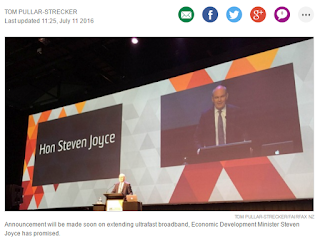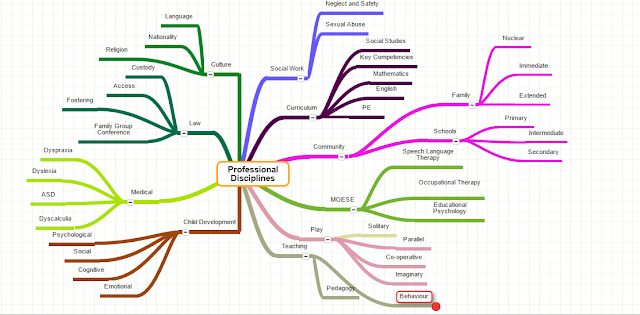APC. 8 Changes in Practice
Reflect on your personal 32 week
learning journey through the whole postgraduate programme and provide a
critical discussion of two key changes in your own research informed practice
in relation to the Practising
Teacher Criteria (PTC) in e-learning.
“...reflective practice is viewed as a means by which practitioners can
develop a greater level of self-awareness about the nature and impact of their
performance, an awareness that creates opportunities for professional growth
and development.” (Osterman and Kottkamp, 1993, p 2).
In my role as a Resource Teacher of Learning and Behaviour (RTLB), I was
fortunate to engage in training with reflective practice that had its focus on
improved outcomes for students. One of the key words in the above quote is ‘awareness’
and it is this critical part of the reflective process that the Mindlab journey
has gifted me in so many different areas, awareness.
Fig 1. The Four Stages of Competence by Noel Burch (Wikipedia)
In any part of reflection the key aspect is awareness. There needs to be
a trigger moment of dissonance to move from unconscious incompetence to conscious
incompetence. Video can be a powerful trigger for that movement to occur. In so
very many ways my learning journey through Mindlab has been a great deal of
time out of my comfort zone from collaborative assignments to blog posts. I
have a Masters in Educational Leadership and I have become comfortable with
written assignments over the years and this course has meant learning to create
videos and collaborate on assignments. I loved the practical team activities in
the first 16 weeks but did find collaborative assignments challenging for a
raft of reasons not least because at the time we were writing the assignment I
was travelling in Hong Kong and China – google drive, shared folders and google
doc were great and so were the skype conversations that took place!
I created a matrix of all the
criteria and I was easily able to identify aspects of my Mindlab journey and my professional practice that related to
every criteria. Selecting just two changes in relation to the Practising
Teacher Criteria was a major challenge. The two key changes in my practice that
I will focus on are ones that are in the early stages and I believe they will
develop and become fundamental and critical parts of my professional practice.
Both of these changes relate to the following criteria:
Criteria
4: Demonstrate commitment to ongoing professional learning and development
of professional personal practice.
Criteria
7: Promote a collaborative, inclusive, and supportive learning environment.
The first change relates to the use of video in my practice and the
second is my professional inquiry of exploring the use of google doc to
increase collaboration and inclusion in my practice.
1.
The use of video for:
- collaborative reflection for my own
professional development
- in class observations and collaborative
reflection with teachers to reflect on and improve practice
- to teach in a flipped practice model eg How to do a ten minute
unassisted writing sample, How to do a KLST-2 oral language
assessment, Implementing co-operative structures in
junior classes to support oral language
The implementation of this has meant learning how to use imovie and how
to facilitate a collaborative reflection process that promotes agency and mana
for all parties. I have role modelled this with video’s of my own practice and I
have started to create short one- two minute video reflections on practice to
use in my professional portfolio. They are rather raw and there is plenty of
room for improvement! One of change aspects has been simply getting past the
cringe factor of seeing myself on film. I have not been exempt from “… a squirmy feeling of vulnerability…” (Canning, 1991, p. 21) in shared reflection
and viewing myself on screen although I note that younger teachers living in a
world of Instagram and ‘selfies’ find this less of an issue.

I have a small film study group and we are all working to support each
other in our skills with editing and producing quality video for professional
purposes. The teachers that I have worked through using video with
collaborative reflection have all found it to be extremely valuable and after
the first instance they have recommended this for their colleagues. I intend to
continue to extend my skill set and become fluent in creating video for teaching, reflection and
evidence of practice. I have been taking video clips of case work and included
this as part of informed consent at the entry phase of my case work.
During the course and the collaborative work of the Literature Review
assignment it was illuminating to note that video "...is worth at least a thousand words, and we believe that no leacture or textbook can come close to conveying the practice as well as the dynamics of a video model of exemplary classroom instruction" (Dieker, Lan, Allsopp, O'Brien, Butler, Kyger, Lovin and Fenty, 2009, p 184). I have been able to share parts of the literature research in my work with teachers and that has been satisfying to be able to link my practice to evidence based research.
- The use of google doc
functions:
-
Shared documents with
transparent access such as shared case log for ease of communication and
transparency, no need to double up on written notes then typing as notes are
typed straight into google doc on phone, ipad or laptop
-
Increased collaboration in
planning for individual education plans and behaviour plans with simultaneous participation
of teacher, SENCO (Special Education Needs Co-ordinator) and school management.
-
I have established a google site
portfolio for Teacher Registration, reflection and appraisal.
The increased collaboration and
partnership with teachers and parents has seen an increase in co-operation and fidelity in implementing
interventions between home and school in behaviour cases. It would be fantastic
if I could research this further! Is it a coincidence, rose tinted glasses or
wishful thinking?
Share your next dream regarding
your future professional development.
In the dream phase, I am interested in further study, perhaps at the
doctorate level in the use of technology within a universal design framework in special education by RTLB and how it
relates to increasing inclusion and collaboration with teachers and parents.
In reality I am looking forward to spending time improving on the learning
from my Mindlab experience such as the use of trello to manage workload and
planning, maintaining a professional blog, reviewing all the sessions and
organising the resources and readings so that I can readily access them. I
dream of time to breathe, walk in the forest and spend time at my bach – no internet
access there. It has been sadly neglected since November 2015 and I don't regret that at all.
Canning, C. (1991). What Teachers Say About Reflection. Educational
Leadership, 18-21.
Dewey, J. (1916). Democracy and Education: An Introduction to the
Philosophy of Education. New York: Macmillan.
Dieker, L., Lane, H., Allsopp, D., O'Brien, C., T.W.Butler, Kyger, M., . .
. Fenty, N. (May 2009). Evaluating Video Models of Evidence-Based Instructional
Practices to Enhance Teacher Learning. Teacher Education and Special
Education, Volume 32, Number 2, 180-196.
Osterman, K., & Kottkamp, R. (1993). Reflective Practice for
Educators. California: Cornwin Press, Inc. Retrieved June 30, 2016, from
http://itslifejimbutnotasweknowit.org.uk/files/RefPract/Osterman Kottkamp
extract.pdf
Wikipedia. (n.d.). Four Stages of Competence. Retrieved June 30, 2016,
from https://en.wikipedia.org/wiki/Four_stages_of_competence









